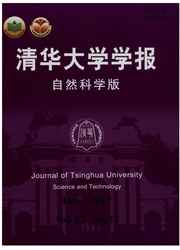

 中文摘要:
中文摘要:
为了描述降水的时空分布特征,在降水发生次数为Poisson分布的前提下提出了3种降水模型。该3种Pois-son矩形脉冲模型分别假设了降水历时为瞬时分布、指数式分布和Pareto分布。利用潮白河密云水库上游流域16个雨量站1980—2008年的降水资料,率定了3个模型的参数;在此基础上,得到潮白河密云水库上游流域降水特征(降水强度、降水频率)的时间变化趋势与空间分布规律。以降水历时瞬时分布的白噪音Poisson矩形脉冲模型为例,流域日均降水场次约0.18场/d、次雨深约为8mm。结果表明:该流域时间上在过去近30a降水量无显著变化,降水频率呈下降趋势,降水强度呈增加趋势;空间上降水量和降水强度自东南向西北逐渐减弱,降水频率则无显著空间规律。这3种模型中,白噪音型和Pareto型更适用于潮白河上游流域的降水分析。
 英文摘要:
英文摘要:
Three point stochastic models were used to describe the rainfall characteristics based on Poisson distribution for the rainfall occurrence. The rainfall duration was assumed to follow instantaneous, exponential or Pareto distributions in the models, The model parameters representing the rainfall intensity and frequency were calibrated with data at 16 rainfall stations from 1980 to 2008 in the Chaobai River Basin on the upper reaches of Miyun Reservoir. The rectangular pulse Poisson model with a white noise distribution had about 0.18 rainfall events per day with each event having a rain fall of 8 rnm. The annual rainfall had no significant changes in this basin but the frequency decreased and the intensity increased during the past 30 years. Both the annual rainfall and the intensity decreased from the southeast towards the northwest while the rainfall frequency had no significant spatial changes. The results indicate that the white noise and the Pareto distribution models perform better in this basin than the exponential distribution model.
 同期刊论文项目
同期刊论文项目
 同项目期刊论文
同项目期刊论文
 期刊信息
期刊信息
